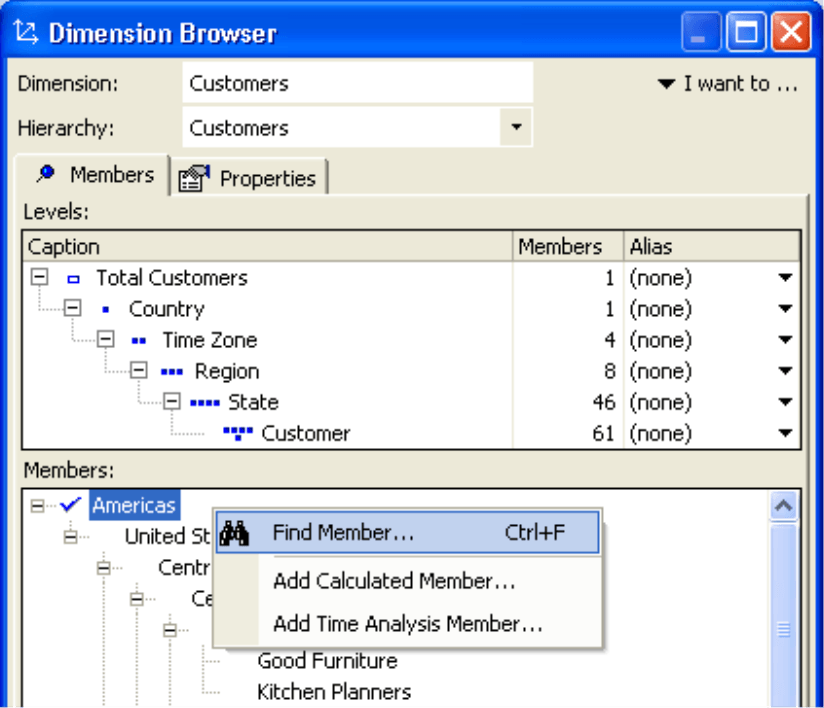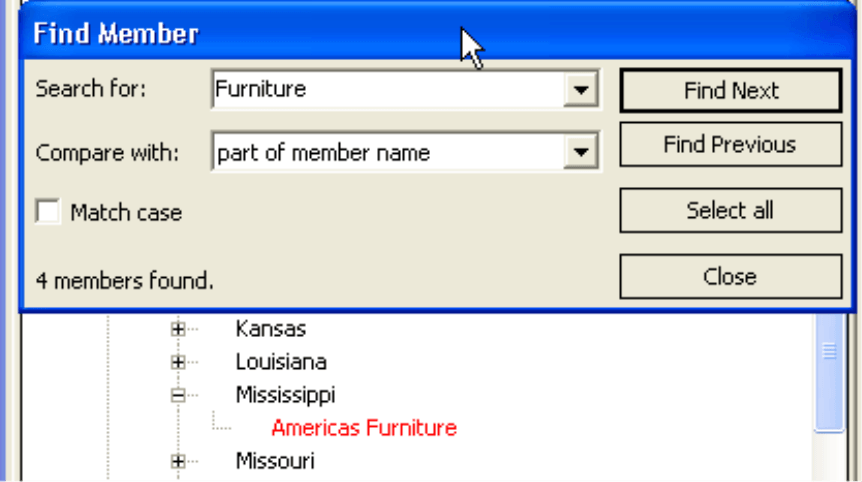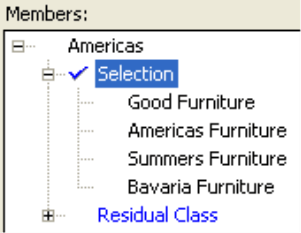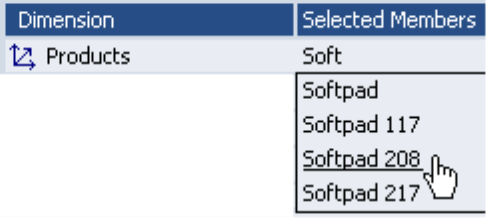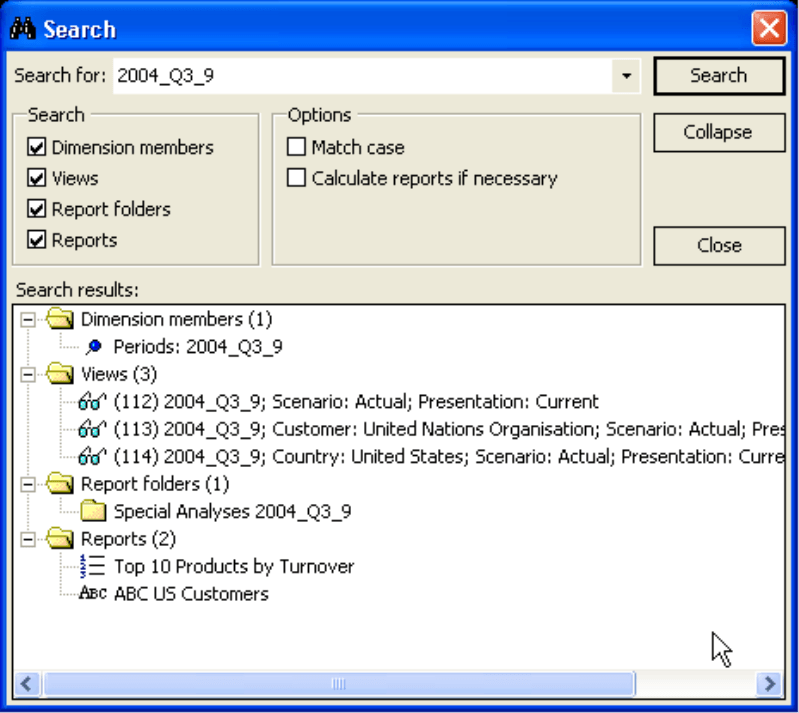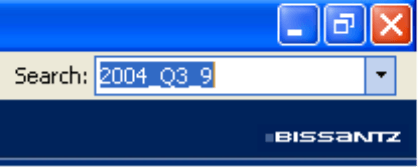Greetings, fellow data analysts!
One of a dog’s favorite pastimes is searching for things: primarily for food, but also for drugs, explosives, truffles (although rare), toys and sticks. Besides being just fun, searching has its incentives, too. Every dog knows he can either eat what he finds or seek a reward from his master – a win-win situation for our four-legged friends!
Knowing how to search effectively can be rewarding for us humans as well – especially when it helps us to find the things that interest us faster. As man(-ager)’s best friend, DeltaMaster also serves us with many different ways to search our data. How you can use and incorporate these searches into your daily work is the topic of this edition of clicks!.
Sincerely,
Your Bissantz & Company team
![]() PS.And as proof that dogs have more things on their minds than just eat, sleep and play, read our new blog, Ask Bella.
PS.And as proof that dogs have more things on their minds than just eat, sleep and play, read our new blog, Ask Bella.
Hierarchies are used in analysis models to administer objects, ranging from dimension members in their levels to reports in briefing book or folders views in the History window. Yet, when you know what you want, it helps to break away from this rigid way of thinking. First, examine your desired objects at random and then break out using the search function. This not only saves you a few mouse clicks but valuable time as well.
You can choose from three different types of searches in a DeltaMaster analysis session:
- Search for members in the Dimension Browser. This function is very useful when dealing with large dimensions with multiple members or branches.
- Enter a member name in the My View window to speed up the selection of individual members.
- The universal search function, which works similarly to an Internet search machine, seeks out dimension members, views, folders and reports matching the entered name and criteria.
Searching for members in the dimension browser
You can start your search for members in the dimension browser by selecting the appropriate command in the context menu, using the I want to… menu or hitting CTR + F as in most Windows applications.
Then enter the search word(s) in the Find Member dialog window and specify how DeltaMaster should match your entry with the names of the members:
- In the selection list you determine if the name that you entered must be located at the beginning, end or anywhere within the member name. If you select the Whole Member Name, your complete entry must coincide with the full member name to count as a match.
If you want to search for a certain member out of a long list, it often suffices to enter just a distinct part of the name you are searching. Other times, however, you may wish to do a search of all customer numbers starting with an “8” or your entire collection of tables (i.e. all words ending with “table”).
- You can activate the Match Case filter if desired.
When you click the Find Next or Find Previous buttons, DeltaMaster will search your list in the desired direction and highlight any members that fit your entry and specifications in red. The search runs across all levels of the respective hierarchy to uncover elements hidden deep in the structure and otherwise only accessible with many mouse clicks. DeltaMaster respectively opens the branches to display all member matches.
An easy way to find and select several members scattered amongst many locations is using the Select All button in the search dialog. This prompts DeltaMaster to select all member matches in the Dimension Browser and replace any previous selection.
The search dialog remains open until you explicitly close it. The Dimension Browser remains active in the background so that you can easily switch between windows, for example, when using the search buttons to browse and mark members for later analysis. To mark several members, just hold the CTRL or Shift keys (for marking entire areas) while clicking.
Once you have marked the members, you can use the full functionality of the Dimension Browser. For example, you can Create a User-Defined Hierarchy from the search results (I want to… menu), so you can analyze the selection again and again.
Direct member search in the My View window
In the My View window you can directly select a member (and levels) by entering its name on your keyboard. That way, you can bypass the Dimension Browser to save even more time and clicks. With the direct entry method, however, you can only select one element per dimension. In other words, you will still need to use the dimension browser for multiple selections.
There are four ways to create a direct entry:
- Activate the My View window (which will turn the title dark blue) and point your mouse on the selected member of the desired dimension (which will be underlined).
- When the My View window is active, point your mouse on the selected member of the desired dimension and hit F3.
- The context menu in the My View window contains an entry for each row to search for members in the referenced dimensions.
- Hold the Shift key and click on the selected member of the desired dimension. This also works when the My View window is not active.
In all four cases you can enter the name of the desired member immediately afterwards.
As soon as you click Enter, DeltaMaster will search the elements of the referenced dimension. If only one match is found, DeltaMaster will select it automatically. If several objects match your search, DeltaMaster will list them so that you can select the desired members with your mouse.
Here again, you can filter your search so that your entry completely matches or appears at the beginning, end or anywhere within the element name. This button is located under Extras, Options in the General tab.
Here, your OLAP database determines whether your search can differentiate between capital and lowercase letters. Microsoft Analysis Services, for example, treats cases differently by default. This unexpected behavior annoys many users; to change it, go to the login dialog, click Advanced Options and add the parameter ”CompareCaseSensitiveStringFlags=0“.
Universal search function
The universal search function, available in DeltaMaster 5.1.5 and higher, is a particularly powerful tool that searches through dimension members as well as views in the History window, report folders and briefing book reports. In fact, DeltaMaster can locate any object used in a calculated report with this search function.
Here are a few examples:
- All reports containing comments (e.g. “to do” lists)
- All reports containing a given measure (e.g. all profit margin analysis to date)
- All reports containing certain levels or members (e.g. all analyses on the “Eastern” sales region)
- All reports that can be traced to a certain analysis module (e.g. all geo analyses), no matter where or under which name you have saved them
- All reports that show a certain member property value
Please note that DeltaMaster cannot search non-calculated reports (e.g. because you had previously used F9 to reset) because they are empty. For this reason, the search dialogue contains an option to Calculate Reports If Necessary. This can take a few minutes depending on the number and complexity of the non-calculated reports.
You can open the search dialog by opening the menu Edit, Search or by hitting CTRL+F. In addition, the standard menu bar of the DeltaMaster application window contains an input box for entering search data. You can hide this field by deactivating the Show Input Box for Search Dialog under Extras, Options, General in the menu bar.
In the Search dialog you can enter a search word and limit where DeltaMaster should search for this word, for example, in dimension elements (and levels), views, report folders and reports. Your search expression will always be compared as a part.
When you search reports, the names of the analysis modules used to create the reports are incorporated as well. A search for “ABC analysis“ will, therefore, locate all saved ABC analyses while a search for “geo analysis“ will match all reports containing geographical analyses. Here, just use the module names as written in the My Analysis window or in the Analysis menu. Since these two can be partially matched, a simple search for “abc“ or “geo“ normally suffice.
The Search dialog is permanently visible and is located above the DeltaMaster window so that you can continue to work parallel to your search. Consider this dialog as your remote control; it is good to have it on hand when you need to call up various analysis objects quickly. A simple click on a dimension element in the Search Results generates the appropriate view. By clicking on a View, you can quickly reset the appropriate view from the history window.
You can also Collapse or Expand the result lists using the appropriate buttons.
Questions? Comments?
Just contact your Bissantz team for more information!
